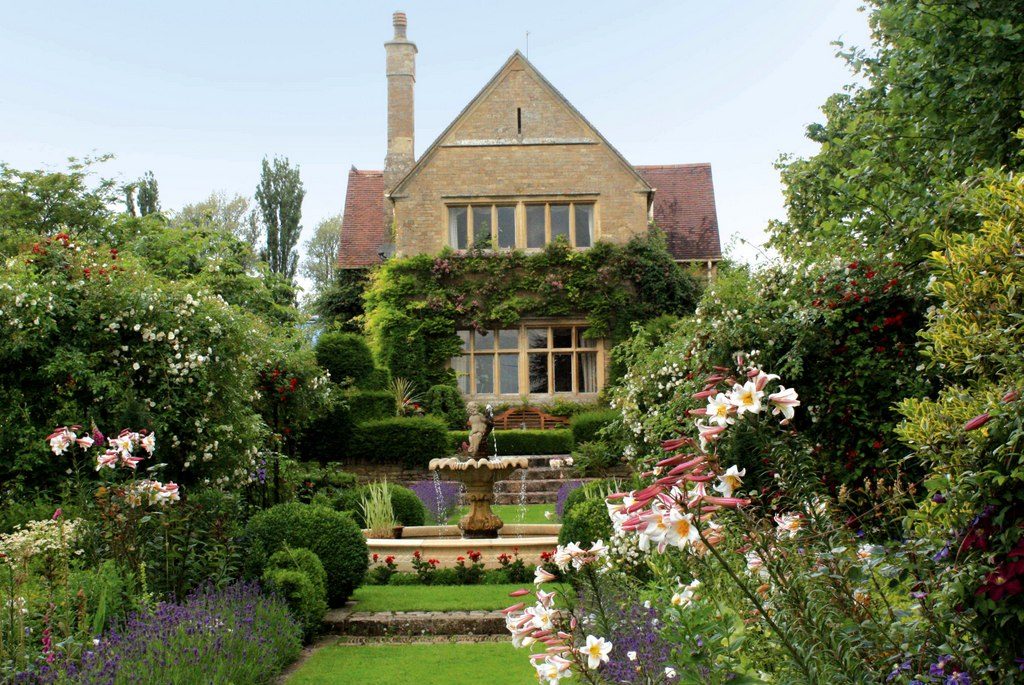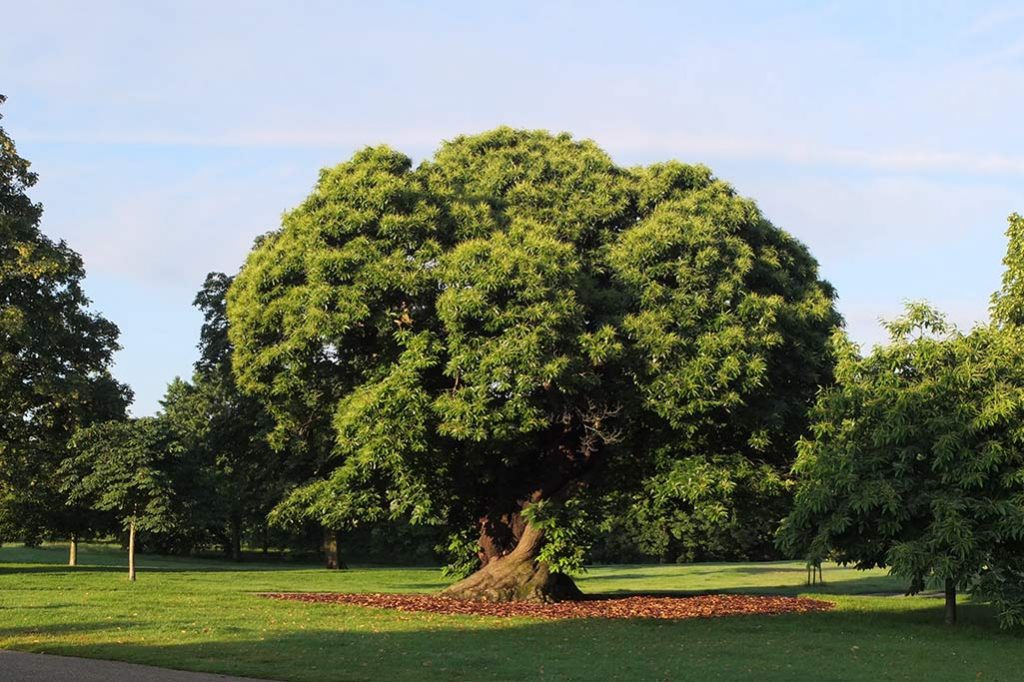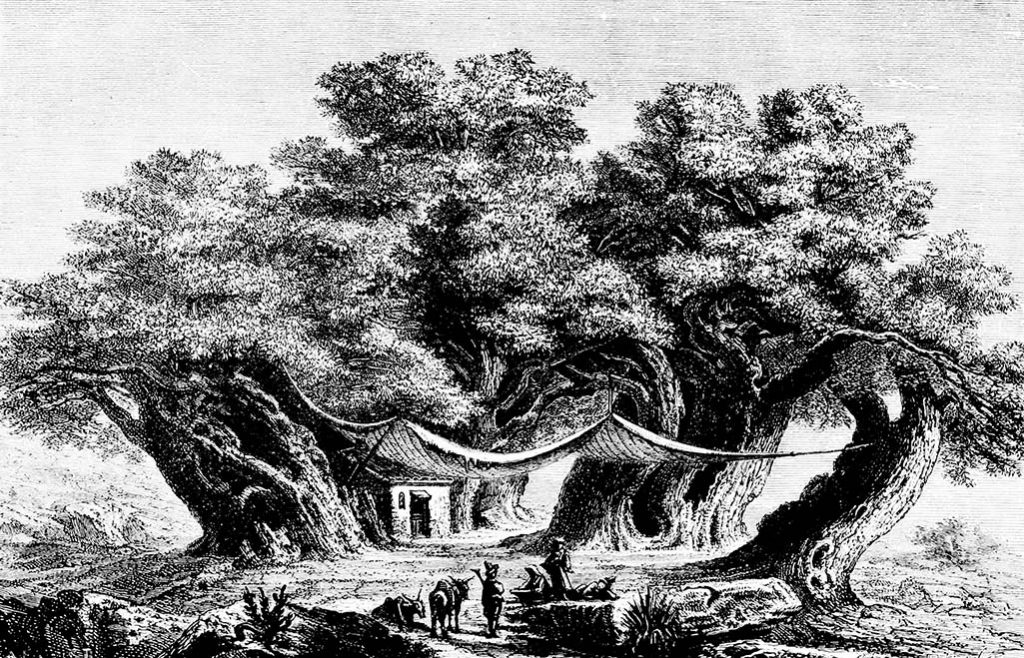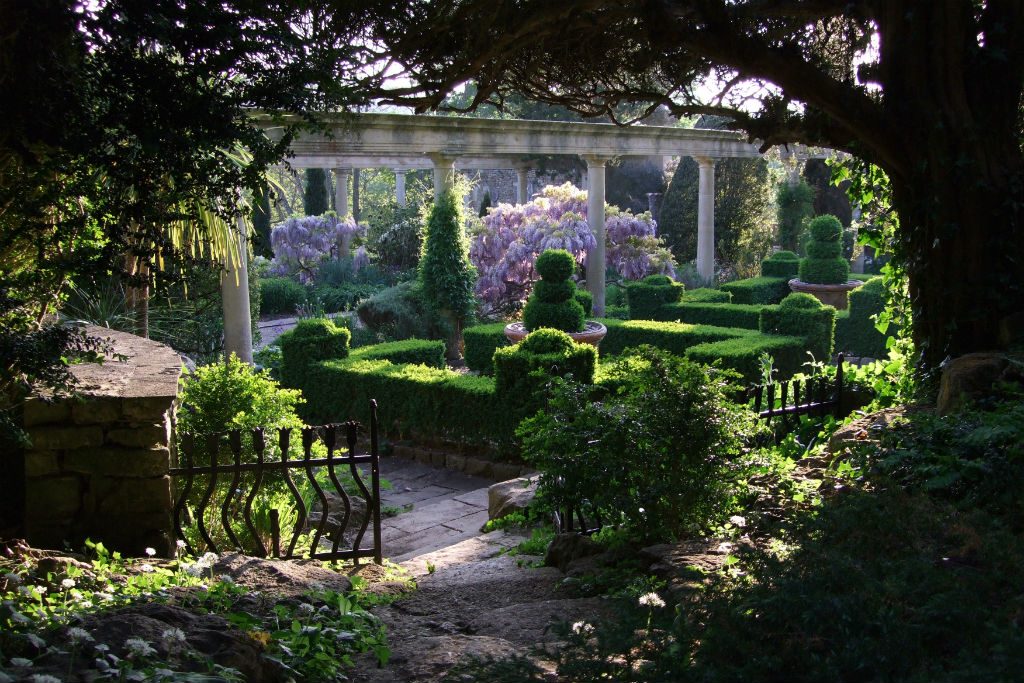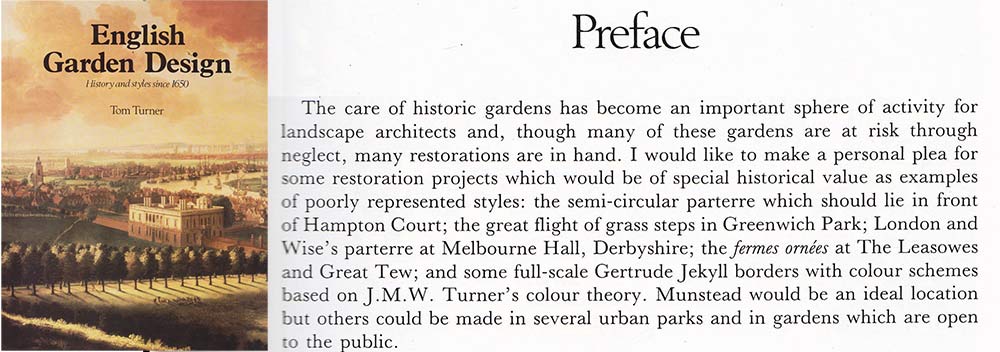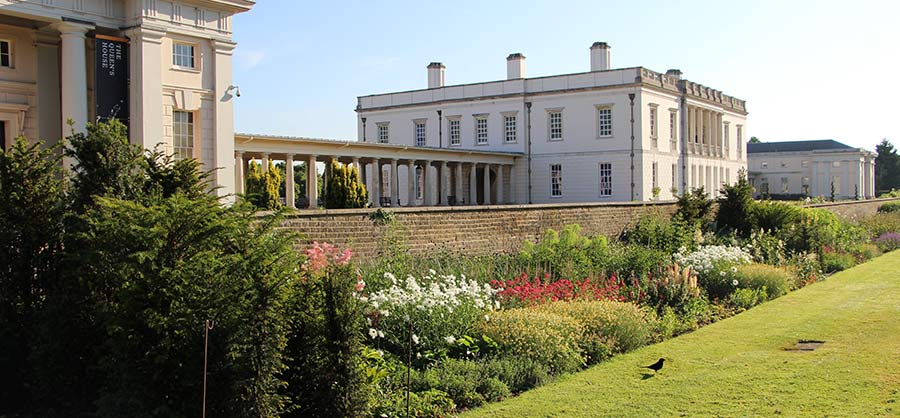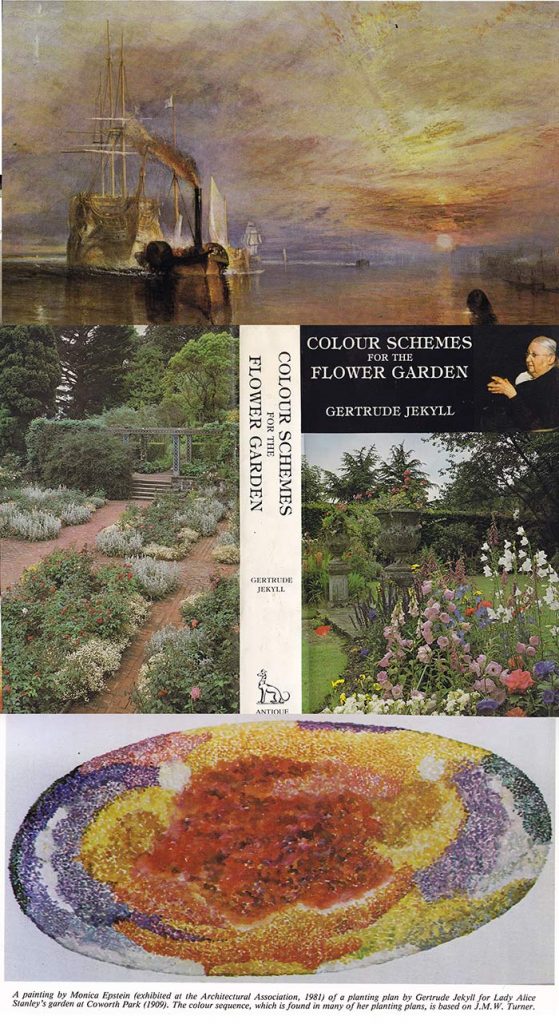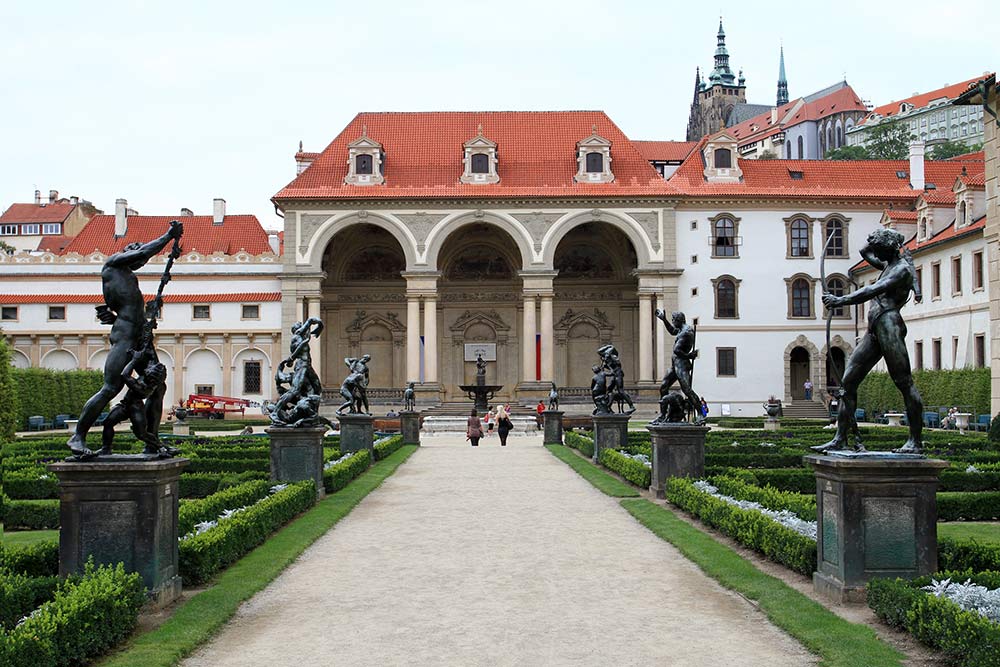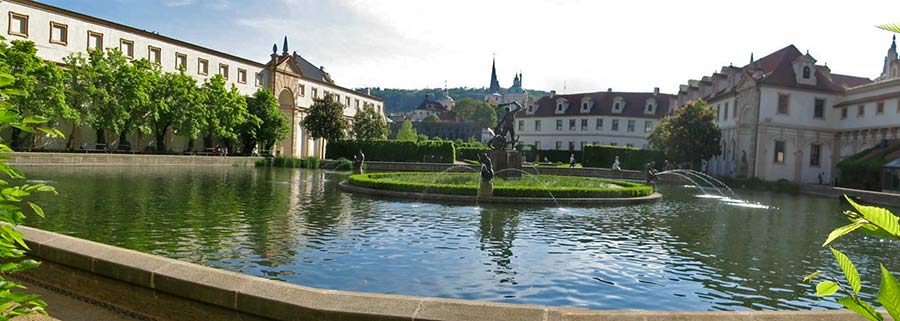<
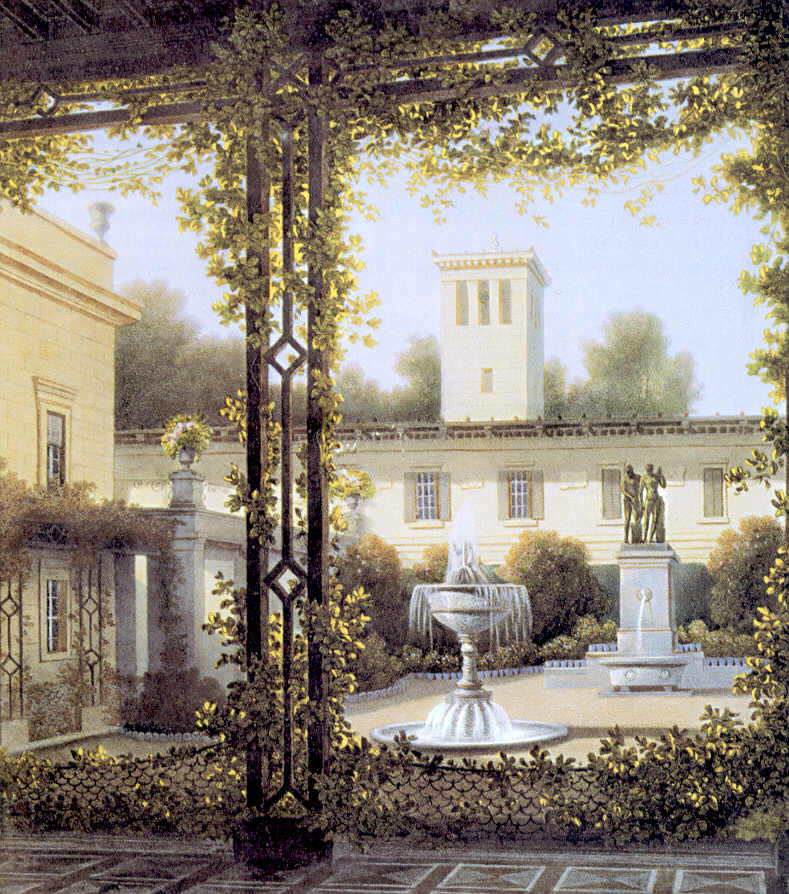
The garden court at Schlosspark Klein-Glienicke has a distinctly Reptonian character
Humphry Repton’s influenced landscape and garden design outside as well as inside the UK. I see his books as England’s most important contribution to the theory of garden design and landscape architecture. They were lavishly produced, opulently published and sought after by collectors. Foreign travel was enormously hard in his lifetime, not least because of the Napoleonic wars, and many people found out about the English style of making gardens from books. Among them was Peter Joseph Lenné.
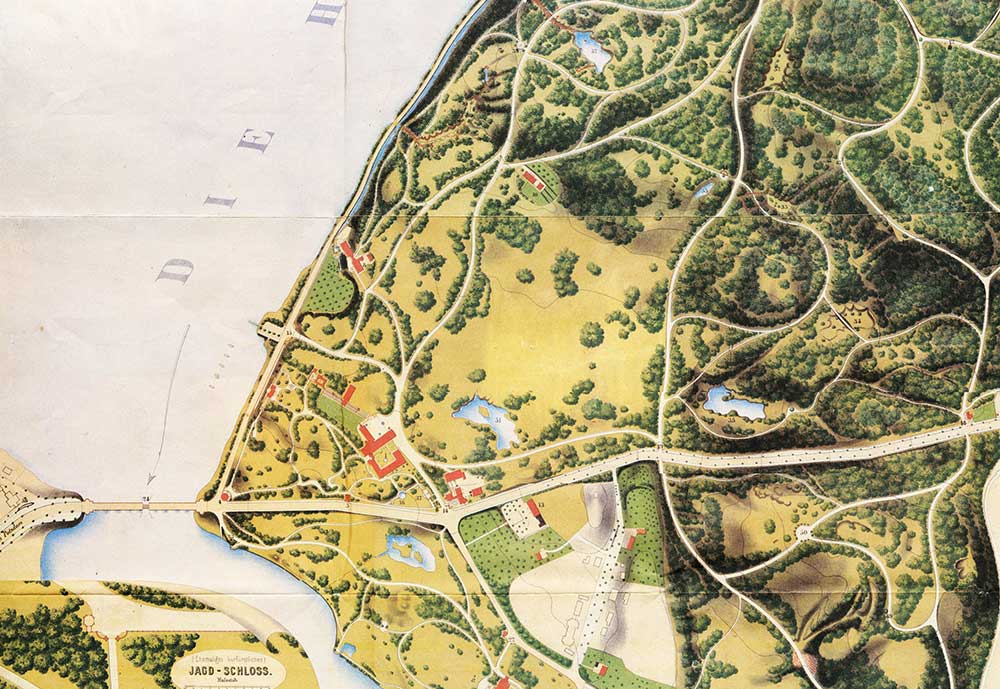
The Klein-Glienicke garden has a domain of art near the house, a Brownian park and distant views of lakes and forests
The Schlosspark Klein-Glienicke in Potsdam Berlin was designed by Lenné with help from Prince Hermann von Pückler-Muskau. The latter invited Humphry’s son, John Adey Repton, to Potsdam. Though remembered as an architect, and not known to have helped with the Glienicke design, John was familiar with his father’s theories. The Glienicke layout shows clear evidence of Repton’s Landscape Style.
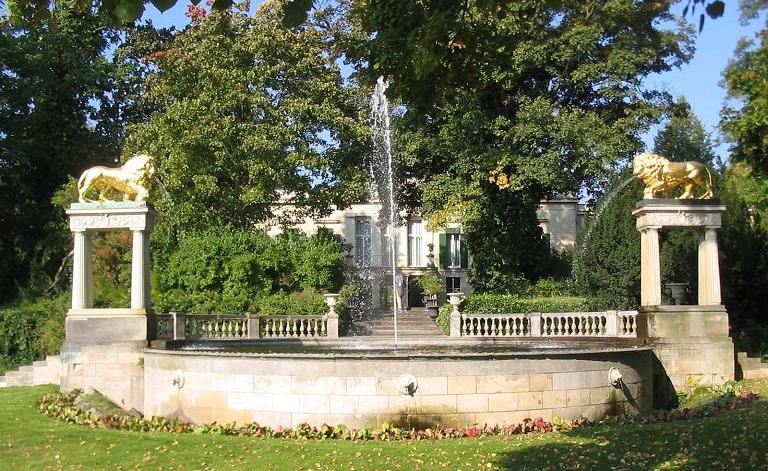
The Lion Fountain
Glienicke was planned with a Beautiful area near the house and a transition to a Picturesque park (in the Serpentine Style) and a Sublime background (the Potsdam lakes and forests).
After their republication by John Claudius London, Humphry Repton’s works had a wide influence on the English-speaking world and were a starting point for Frederick Law Olmsted’s practice and the development of landscape architecture as an organised profession. Repton also influenced UK town and country planning with the principles that:
- cities should be compact
- agricultural land should be protected from urban sprawl
- national parks and natural parks should be protected from development

